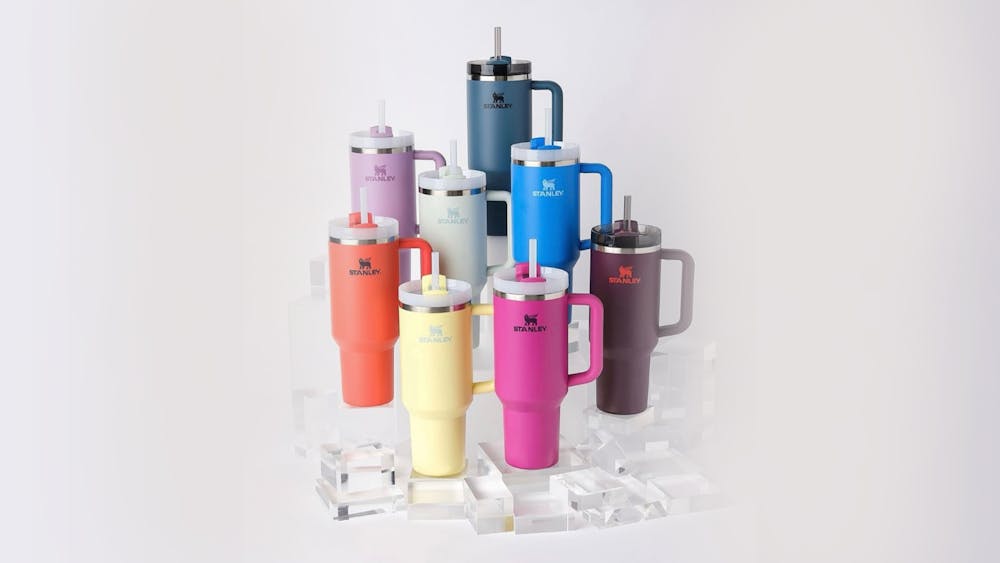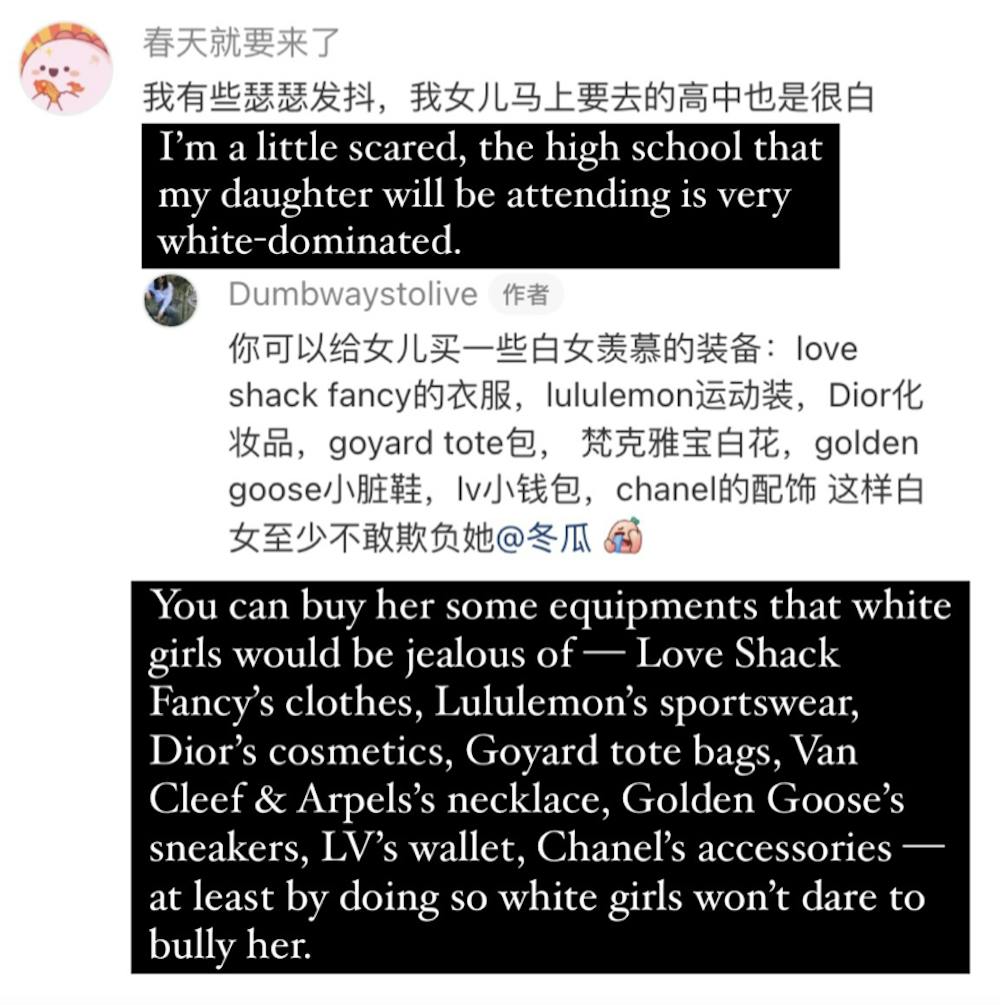Stanley Cup hype: Have we normalized commodity fetishism?

On TikTok, the hashtag “#StanleyCup” has 7.3 billion views. Simultaneously, on the news, people poured into Target for a limited version of the Stanley Cup, even though they’ve likely hoarded four or five Stanley Cups already. What is so unique about the Stanley Cup? While some claim it is a source of emotional support, others see it as a millennial aesthetic. By routinely releasing limited versions with different colors, Stanley Cups possess a quality that is desirable among Gen Z girls.
At Duke, we see people carrying Stanley Cups around – it is almost pervaded among certain groups of people. Before coming to Duke, I was exposed to a completely different type of fashion and popular culture. In my home country, people do not use 40-ounce water bottles, nor do they find the appearance of a Stanley tumbler attractive. When I was in high school, I used a 17-ounce thermos bottle, which is light, portable and commonly seen among my peers. It is interesting to see how people from different cultures perceive one thing differently based on either aesthetics or empiricism.
 Admittedly, Stanley Cups can be a source of emotional support for those who have a higher need to keep hydrated throughout the day, considering their insulation and 40-ounce capacity. However, it has evolved into a cultural symbol under the waves of hyperconsumerism.
Admittedly, Stanley Cups can be a source of emotional support for those who have a higher need to keep hydrated throughout the day, considering their insulation and 40-ounce capacity. However, it has evolved into a cultural symbol under the waves of hyperconsumerism. Is the hype over Stanley Cups about aesthetics and/or empiricism? Part of it might be. However, my own encounters with culture and accommodations spun a different narrative. After noticing that I carried a Camelbak tumbler, a friend from my home country asked me whether I was Americanized. Another friend who’s currently enrolled in a less diverse university told me that they might get a Stanley Cup to fit into “bourgeois American culture.” Stanley Cups signify an archetype of a desirable trendy culture, yet it denotes an exclusivity to the alternative.
A Stanley Cup is not the only code to an exclusive popular culture and hyperconsumerism. On a Chinese lifestyle platform “Xiaohongshu” (the so-called Chinese Instagram), “U.S. private school elitist girl culture” themed posts went viral. The posts displayed the commonly perceived trending outfits and accessories among certain groups of American young people, including Stanley Cups, UGG boots, Lululemon, Golden Goose sneakers, Goyard tote bags, etc.
The amount of fashion items displayed in the posts are overwhelming, and the title of this trending series is captivating. With an almost aggressively direct categorization of style, a collage of fashion choices are now available in front of the viewer, wondering whether you should join the cohort of stylish girls. Such might be a projection of the star image, and as the public reception shifts to a general admiration of those coded brands, you justify your doubts and thoughts, riding the wave.
We normalize commodity fetishism. We normalize not only hyperconsumerism and commodity fetishism, but an organized passivity facing whatever’s overwhelmingly trendy. What about your Spotify Wrapped? What about the concept of an icon? What about those career paths that seem so tempting but you’re so uninterested?
Nowadays, commodities are endowed with something more than themselves; no longer do they follow their simple, specialized functions. People start to believe that their personalities are reflected by what they consume: clothes, accessories, tech items, music, food and types of entertainment.

Commodities like Stanley Cups are so mystified with artificial auras that it becomes difficult to realize that they are deceptive in themselves. People tend to believe that a higher price reflects some essential characteristic, presumably higher quality, of the commodities, while the truth does not always align. It takes labor to produce a decent, desirable commodity which further becomes a cultural symbol among certain groups of consumers. The relation between commodities’ stylish appearance and an exclusive culture derived from their aura is easily perceived if you lived in a capitalist society for a while, yet the underlying economic relation and how they dictate a social structure is often overlooked.
Marx’s theory of alienated labor stated that individuals are separated into units and are not only alienated from their work, product and creativity but also from each other. Such alienated experience is hidden under the aura of commodities that distract consumers from what matters beneath that image.
French theorist Guy Debord defined the “Image” as a result of capitalist accumulation. “Image” is every (and all) capitalist cultural symbol that dominates and distorts everyday life, and it gradually becomes the present, the reality we live. We are lost in the tides of consumerism and unaware.
For some of us, the question is: Are we really lost? When commodity fetishism encounters other factors such as cultural background, socioeconomic condition and immigration status, it’s urgent to ask that question again. Are we completely unconscious of hyperconsumerism, or do we intentionally wield it as a symbolic shelter?
On Xiaohongshu, I was shocked by an entirely self-aware comment under a post discussing a Chinese girl’s dilemma in a prestigious boarding school in New England. Being a first-generation American and international student is difficult. Such student knows that they will belong to this land someday but not now, so they crave belonging and acceptance from the majority. Under the post, people shared their and their children’s experiences of being excluded in racially homogenous U.S. high schools.

The Blogger offers her upfront suggestions: “You can buy her some equipment that white girls would be jealous of – LoveShackFancy clothes, Lululemon’s sportswear, Dior’s cosmetics, Goyard tote bags, Van Cleef & Arpels necklace, Golden Goose’s sneakers, LV’s wallet, and Chanel’s accessories – at least by doing so white girls won’t dare to bully her.”
This comment hurts. This echoes the Xiaohongshu post mentioned above, which discoursed on U.S. private school girl culture. Everything seemingly points to an observable truth that sometimes one has to learn others’ physical and cultural language to defend oneself.
But brands do not matter. What matters is the act of hyperconsumerism and how this act, when enacted by the marginalized, reverses the power dynamics against those who hold power in certain environments. Such an act reveals those social relations that are not widely perceived among individuals.
One’s exhibition of hyperconsumerism doesn’t constitute a symbolic shelter but rather a sheer accumulation of capital — thus one becomes the image itself, almost treacherously, intriguing and trapping the mass in material consumption.
Stanley Cups are now under the spotlight of hyperconsumerism, and what’s next? All fashion is old fashion; all fashion is new fashion. All fashion is the climax of an ongoing plot, and we look back, blinded by the matrix of repetitions. So we beat on, boats against the current, borne back ceaselessly into the past.
No comments:
Post a Comment